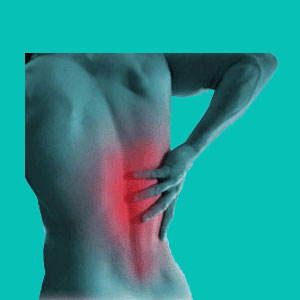
Lumbar degenerative disc disease is such a very common spinal diagnosis that is used to explain a multitude of painful lower back and sciatic nerve complaints. However, it is clear from research and statistics that LDDD is not a disease at all and is rarely to blame for any pain or related symptoms in the lower back or any other area of the spine.
This resource section will provide a general overview of disc desiccation in the low back and will also provide additional research materials for patients to review and consider before seeking treatment. If you have been diagnosed with lumbar disc disease, this section is a must read.
Lumbar Disc Disease Causes
Life causes degenerative disc disease in the lower back. There is no better explanation for it. The daily activities we all do and the normal spinal aging processes cause our lumbar discs to wear out, lose height, lose circumference and lose diameter faster than in any other spinal region.
We will all demonstrate lumbar DDD by the time we are in our 30s and many of us will have it in our 20s. I was diagnosed with LDDD at the age of 16. Genetics and lifestyle will certainly contribute to how much degenerative change occurs and how fast. However, it is crucial to remember that these changes are normal and expected and are not inherently painful or problematic at all. It is very rare for a person to suffer such extensive deterioration of the lumbar discs as to cause pain or neurological expressions, but it is possible, given extenuating circumstances.
Read more about the varied causes of lumbar disc disease.
Lumbar Degenerative Disc Disease Topics
The dialogs below provide a detailed look at various aspects of disc degeneration in the lower reaches of the spinal column:
Lumbar disc disease symptoms are a controversial topic of discussion, since most intervertebral desiccation does not cause any type of pain or neurological expression whatsoever, but this is not an absolute rule.
Lumbar disc disease diagnosis can be accomplished using any type of spinal imaging testing.
Lumbar disc disease treatment may or may not be needed. However, it is certainly one of the most frequently offered medical services in the dorsalgia sector of medicine.
Lumbar disc disease exercises are one of the most common forms of conservative treatment, but what is their goal and do they actually work?
Lumbar disc disease surgery is used for extreme cases of pathological disc deterioration, but is also perpetrated against many patients without need.
Lumbar Disc Disease Processes
When the spinal discs age, they dry out and lose their ability to hold moisture. This causes them to shrink and makes them more prone to bulging and rupture. This process is not painful and most herniations which occur due to degenerative changes are completely asymptomatic. Some herniations might be mildly to moderately painful for a short time frame, but even this is rare when compared to herniations enacted by trauma.
LDDD helps facilitate other spinal aging conditions, such as osteoarthritis. Mild to moderate arthritic change in the spinal column is also typical and expected and is not usually the source of any significant symptoms.
Occasionally, bone spur formation can occur in a particularly bad spot on the vertebrae, causing discomfort. Rarely, this condition might necessitate medical or even surgical treatment. However, this is a grossly over diagnosed condition and many cases are misdiagnosed when targeted as the actual cause of severe, ongoing back pain.
Lumbar Degenerative Disc Disease Facts and Myths
Of all the spinal conditions, DDD is perhaps one of the greatest causes of the diagnostic nocebo effect. When pronounced by a doctor, the actual words degenerative disc disease sound so threatening and harmful. Most patients report horrific fear and anxiety when diagnosed with this condition.
Our suggestion is to simply stop using this term altogether to describe normal spinal aging and reserve it for the extremely low incidence of extreme and problematic spinal degeneration. Calling the condition a disease in 99% of cases is barely short of criminal.
When I was told I had DDD, I felt as if my life was over. 16 years old and my chiropractor seemed to be pronouncing a death sentence on me. That is honestly the way I felt. This nocebo effect certainly set the perfect circumstances for my 18 year epic battle with ischemic back pain. Thanks doc, I really appreciate it. Now, I understand the reality and completely universal nature of this normal structural occurrence. The fact that I have DDD is now of no concern to me. You have it too. We all do, even that chiropractor.
If you have been diagnosed with lumbar degenerative disc disease as the exclusive cause of your chronic sciatica or lower back pain, you owe it to yourself to really research the condition. You will surely find that the diagnosis is likely to be inaccurate, since the condition is rarely to blame for severe or ongoing pain of any type. We always recommend knowledge therapy, in these cases, as an ideal means of understanding what is causing your pain, and more importantly, what is not causing it.





